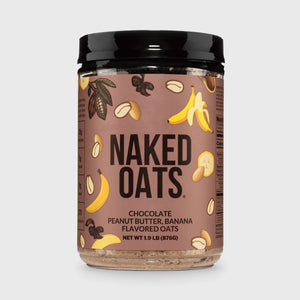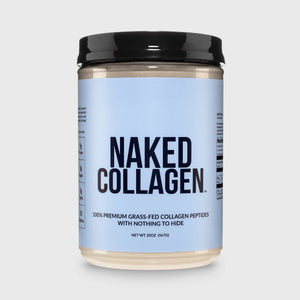
One of the most overlooked parts of a successful workout routine is knowing how long to rest between sets.
Rest and recovery are crucial, not just recovery in between workouts, but between each set of repetitions as well. Your body needs enough time to refuel the muscles with energy, in order to perform each set at the optimal level.
The trick is finding the right balance between getting enough rest, without losing the benefits you get from the exercise itself. And for different goals - such as hypertrophy, strength, or endurance - you’re going to need different rest timing.
Read on to learn why rest timing is so important, and the optimal rest for your specific workout goals.
Why Rest Between Sets?
The body needs significant levels of energy to perform tough workout exercises, and there’s only so much energy it can produce and use in one go.
Rest in between sets allows you to refuel your muscles with energy, so you can perform your next set at an optimal level.
We won’t go in-depth into the science of it, but a quick summary of it is that there are three energy systems at work in your body: the phosphagen system, the anaerobic (glycolytic) system, and the aerobic (oxidative) system.
These systems all work to produce adenosine triphosphate, or ATP, which is the compound that provides energy to the muscles.
Each energy system works a little bit differently, providing energy for different types of exercise - such as intense, short-duration exercises, or longer, lower-force activities.
Your rest period is where whichever energy system you’re using the most can refuel and restore your energy levels for the next set.
If you don’t get enough rest, you’re going to find your performance drop in subsequent sets. Your total workout volume will drop as well.
Let’s say instead of being able to perform 10 reps of 100 lbs for 4 sets, you end up falling short of 10 reps on the 3rd and 4th set, or having to lower the weight.
Thus you won’t get the same benefits as if you completed the full routine at full capacity.
Creatine monohydrate is one of the most well-researched, science-backed supplements that has been proven to increase ATP for muscle energy storage that can result in quicker recovery and reduced fatigue after sets.
How Much Rest Between Sets is Necessary for Different Goals?
There isn’t a one-size-fits-all answer for rest between sets. The answer for how much rest you need between sets depends fully on what type of training you’re doing, and what your goals are.
For example, it’s important to give your energy stores time to refuel, like we talked about in the previous section. But for some types of training, you need to be putting your muscles or your aerobic system under stress in order to grow. If you rest too long, you’re going to lose out on some of the benefits.
That’s why finding the ideal range for your specific type of training is important. Here’s a guide to help you.
Rest Time for Strength Training
If you’re training for strength and power, the goal should be to lift as much weight as you can over the total length of the workout.
This means lifting as heavy as you can (not quite your 1 rep max, but close), for smaller sets, with longer time in between. The heavier weight and higher power output mean you need a longer rest period to perform each set and rep safely.
Optimal rest time: 3 to 5 minutes between sets

Rest Time for Hypertrophy
Hypertrophy, or muscle growth, requires your muscle fibers to be put under more stress, essentially creating small tears in the muscles, which become bigger when they’re repaired.
Too much rest time will lessen the overall stress on your muscles, and though it will make the next set easier, it will likely reduce your gains.
That’s why you want to look for a moderate length rest between sets if your goal is muscle growth. Long enough to do the next set safely, but not so long that you reduce hypertrophy.
Optimal rest time: 30 to 90 seconds between sets
Rest Time For Metabolic Conditioning
For conditioning and endurance, your goal is to increase how much the body can do on limited energy stores. So it makes sense that you’re going to want a shorter rest period.
These kinds of exercises include HIIT workouts and training to increase your V02 max.
The goal is to make yourself tired and fatigued and to push through this fatigue. That’s where you get gains in conditioning and endurance. For this, try to stay under 1 minute between sets - or even better, under 30 seconds.
Optimal rest time: 60 seconds or less between sets
Is the Rest Period Similar for Heavy and Light Weights?

The main thing to think about in terms of rest timing is your fitness goal, as we talked about above, rather than the type of exercise or how heavy your weights are.
However, it generally works out that you’ll want a longer rest period between sets if you’re lifting heavier weights.
First, because this tends to coincide with strength training (which you want to be aiming for a long rest period of around 2-5 minutes for).
Second, because heavier weights are potentially more dangerous, there's more chance for harm if you do heavier lifts when you’re not fully recovered. At lighter weights, you’re less likely to get hurt if you allow your form to drop.
Other Habits to Promote Maximum Recovery
Rest timing is important, but so are a lot of other things if you want to recover fully and perform at your best. Here are a few things to focus on to improve your recovery:
Sleep
Sleep is the number one thing you can do to recover faster and see quicker gains from your workouts. Focus on getting 7-9 hours of high-quality sleep, by sticking to a regular sleep schedule, and implementing good sleep hygiene practices before you go to bed.
Nutrition
The food you eat is also going to make a big difference in your recovery time.
If you’re eating junk and engaging in bad nutritional habits in between your workouts, you’re not going to be getting the vitamins, minerals, and nutrients your body needs to repair and recover fully.
Eat clean, whole foods, avoid processed foods and too much alcohol, and make sure you’re getting enough protein in your diet.
The Right Recovery Supplements

Supplements can also do amazing things for your recovery. Specifically, an adaptogen supplement such as our recovery mushroom supplement, Naked Recovery.
Its ingredients, including 6 US-grown adaptogenic mushrooms, tart cherry, and lemon balm extract help to reduce both physical and cognitive stress and speed up recovery time in between workouts.
Mobility Training
Finally, improving your mobility will help you feel less soreness after working out, and get back to 100% faster. The more mobile and flexible you are, the easier blood can flow around your body and deliver vital nutrients to the muscles.
Try doing yoga, or add a stretching routine either after your workout, or on rest days.
Final Thoughts
Any successful athlete or fitness enthusiast knows the value of recovery. To get optimal gains, you need to find the optimal balance between being active and allowing your body to rest and rebuild.
While post-workout rest is more widely understood, rest in between sets is just as important, albeit for different reasons. Finding the correct workout timing for your goals will help you perform more sets at a higher intensity, and ultimately, get more benefits out of every workout.














